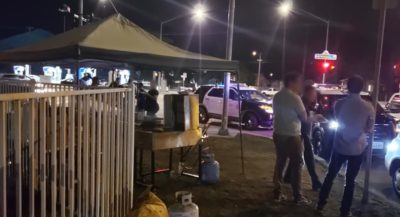In 1969, Apollo 11 astronauts Neil Armstrong, Buzz Aldrin and Michael Collins launched from Florida’s Kennedy Space Center with the goal of being the first to walk on the moon.
July 20 marks the 50th anniversary of that dream being achieved as Neil Armstrong took his famous “one small step.”
Here in Valencia, Cicoil, an electronics manufacturer and the inventor of the bio-harnesses worn by all three astronauts, is also celebrating the 50th anniversary with great pride for their role in the historic moment.
“It’s a really cool piece of history,” president and CEO Howard Lind said. “It’s very special to everyone at Cicoil that NASA selected our flat cables 50 years ago, but even more special to have been part of Neil Armstrong’s famous ‘first step for man,’ and ‘giant leap for mankind.’”
The harnesses were worn on the inside of each astronaut’s space suit, and were an integral part of the mission as they allowed for continuous monitoring of vital signs, such as blood pressure, respiration, body temperature and pulse rate, for each astronaut throughout the mission, which in NASA’s words was “vital to the successful achievement” of these missions, according to Rich Buchicchio, Cicoil national sales and marketing manager.
Using the vitals transmitted back to Earth during the mission, we know that the Apollo 11 astronauts were actually pretty calm during liftoff — Armstrong was the most excited with a rate of 110 bpm with Collins at 99 and a calm Aldrin at just 88 bpm. But getting to the moon was hardly smooth sailing, according to a NASA Apollo 11 mission report.
“When the Eagle was supposed to land on the moon, it was touch and go whether or not they were going to continue the mission or abort it,” Lind said. “It was really close because they didn’t know if they had enough fuel to get down and then get back up.”

The astronauts did some calculations and “Neil Armstrong said, ‘No, we’re going, we know we have enough.’”
“They did calculations themselves on a piece of paper and they made the call — they didn’t even wait for Houston,” Lind added. “They measured the (astronaut’s) heart rates when they were going down (to land on the moon) and (Armstrong’s) heart rate was almost 160 beats a minute, so his heart was racing. It was a lot of pressure … There was a big chance they weren’t going to come back.”
The astronauts wore the 26-inch-long, zero-gravity harnesses from start to finish, including on board the Columbia Command Module during the lunar orbit and the Eagle Lunar Module that landed on the moon’s surface as well as on the historic first and second walks.
Products like these harnesses typically take a year or two to produce as they undergo various testing, Lind said.
Cicoil’s harnesses were chosen over other design options for the quality and reliability along with the ability for it to be really lightweight and compact, Lind said. The harness was also able to withstand the rugged and harsh environments of space, including the extreme temperatures astronauts would face, according to Lind.
“With the heat of the liftoff and the extreme cold and the vacuum when you’re up in space, along with the ultraviolet light, space can be harsh,” Lind added.
The harness also had separately encase signal pairs to eliminate electronic interference, providing uninterrupted signal back to the space station, Buchicchio said.

Cicoil’s were the only harnesses that met all of these needs during each of the numerous phases of the mission with both intra-vehicular and extra-vehicular activity.
Today, Cicoil still has the original drawings of the harnesses from 1968 hanging in their office in Valencia, while the original harnesses can be seen in the Smithsonian Museum in Washington, D.C.
In addition to the Apollo 11 mission, these harnesses were worn by Alan Shepherd when he became the first American to travel to space, John Glenn when he became the first American to orbit the Earth, and for Edward White to be the first American to walk in space.
Now, Cicoil continues to make flat cables that are used throughout the aerospace and military industry, as well as some commercial or industrial equipment, such as medical diagnostics.
“In fact, we have cables on the Voyager probe that just left the galaxy, so our cables have literally traveled billions and billions of miles in space,” Lind said. “Basically every military satellite that’s orbiting has our cable assemblies in the satellites.”
Cicoil’s flat cables have even made it into the world’s first 3D robotic sign in Coca-Cola’s Times Square landmark unveiled in 2017.
And all of these products are manufactured right here in Santa Clarita by the approximately 85 employees who work at their facility.
Cicoil Corporation is located at 24960 Ave, Tibbitts in Valencia. For more information, visit cicoil.com.














